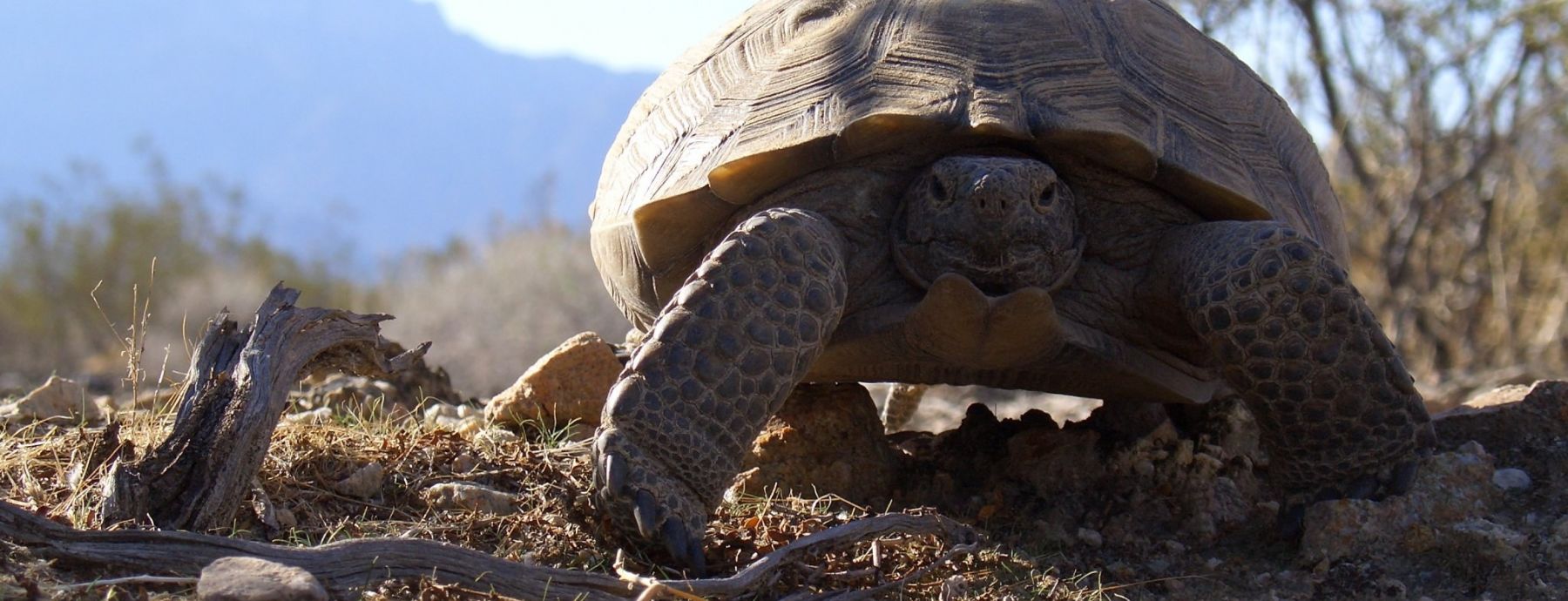Immune function of nonmammalian vertebrates has not been well studied, but research suggests that reptiles have slower and less robust cell-mediated and humoral immune responses than birds and mammals. Thus, traditional wildlife epidemiological methods (e.g., serological analyses) may be inappropriate for ectothermic reptiles. Instead, newly developed gene transcription methods have been used to evaluate reptile immune function. Gene transcription targets specific genes that respond to stressors, including pathogens, and quantifies the amount of mRNA transcribed, thereby measuring the individual’s level of responsiveness. This study focused on using gene transcript profiles to elucidate the innate and induced immune responses of the Threatened Mojave desert tortoise (Gopherus agassizii) to Mycoplasma spp., which cause upper respiratory tract diseases and are a major source of mortality.
USGS researcher K. Kristina Drake and CIDD researchers Christina Aiello (now at Oregon State) and Peter Hudson used captive and wild tortoises for this study. They allowed chronic Mycoplasma carriers to naturally infect healthy tortoises while retaining healthy captive and healthy wild tortoises as controls. Throughout the 420-day experiment, Drake et al. measured body condition, assessed disease status, and performed Mycoplasma spp. exposure assays (i.e., ELISA) and gene transcription.
Drake et al. found that a Mycoplasma sp. was detected in exposed tortoises within 2–4 weeks, yet these individuals did not develop antibodies until 60–85 weeks post-exposure and antibodies remained detectable for up to two years until the study ended. Tortoises classified as infected or exposed had numerous significant respiratory symptoms. Body condition for most tortoises was in the healthy range over the study period. Tortoises were largely similar in genes related to immunity and physiology, with the exception of infected vs. healthy wild tortoises such that ~4 times fewer genes relating to immunity and physiology were transcribed in infected tortoises than healthy wild tortoises post-dormancy.
This study provided insight into the progression of an important bacterial infection in the Threatened Mojave desert tortoise. Infection can be transmitted during cohabitation, but it takes several weeks to >1 year for symptoms and antibodies to develop, respectively. Despite this, transcription profiles were generally the same among treatment groups, adding complexity to understanding this disease. More work is needed to thoroughly explain Mycoplasma infections in desert tortoises, as well as the ecoimmunity of reptiles as a whole.
Synopsis written by Ellen Brandell
Photo: USGS
Written By: K.K. Drake, C.M. Aiello, L. Bowen, R.L. Lewison, T.C. Esque, K.E. Nussear, S.C. Waters, P.J. Hudson
Paper Url: https://onlinelibrary.wiley.com/doi/pdf/10.1002/ece3.4897
Journal: Ecology and Evolution
Paper Id: 10.1002/ece3.4897
